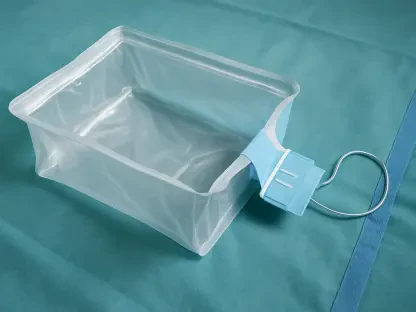Imagine a world where a small, bandage-sized sticker on your skin could warn you of potential health issues before they become serious, simply by analyzing the sweat you produce during everyday activities like walking or sitting at a desk. This isn’t a distant dream but a reality brought to life by cutting-edge wearable technology. This guide aims to help readers understand how to leverage an innovative sticker-like sensor for early health alerts through sweat analysis. It will walk through the purpose of this technology, its importance in personal health monitoring, and the step-by-step details of how it functions to detect critical biomarkers like lactate, which can signal conditions such as sepsis or oxygen deprivation in tissues. By the end of this guide, the knowledge gained will empower individuals to appreciate and potentially adopt this non-invasive tool for continuous health tracking, whether for athletic performance or general well-being.
The significance of this technology lies in its ability to fill a critical gap in wearable health devices. Traditional sensors often fail to analyze minimal sweat volumes, missing subtle but vital health changes during low-intensity activities. This guide explores a groundbreaking solution developed by researchers at Penn State, offering a user-friendly, cost-effective way to monitor sweat for early warnings of serious conditions. Understanding this sensor’s potential can transform how health is managed on a personal level, making proactive care accessible to athletes, patients, and everyday individuals alike.
This guide also underscores the broader impact of non-invasive health monitoring. With chronic conditions and performance-related issues often going undetected until they escalate, a device that provides real-time insights through sweat analysis is a game-changer. Readers will learn how this sticker-like sensor not only enhances personal health tracking but also contributes to a larger movement toward preventive healthcare, ensuring that small warning signs are caught before they turn into major concerns.
Revolutionizing Health Monitoring with Wearable Sweat Sensors
The advent of wearable sweat sensors marks a pivotal shift in how health can be monitored continuously, even outside clinical settings. This technology, spearheaded by researchers at Penn State, introduces a sticker-like sensor that adheres to the skin and analyzes sweat to detect biomarkers such as lactate. Lactate levels can indicate critical conditions like tissue oxygen deprivation or sepsis, making early detection vital for timely intervention. Beyond medical applications, this tool holds immense value for athletes seeking to optimize performance by tracking physiological responses during training or competition.
Unlike many existing wearables that require significant perspiration to function, this sensor excels in capturing data during low-intensity activities, such as sitting or light walking. Its design addresses a long-standing challenge in health tech: the inability to monitor subtle changes in the body when sweat production is minimal. By focusing on accessibility and precision, the device opens new avenues for individuals to stay informed about their health status without invasive procedures or bulky equipment.
The sensor’s unique features further set it apart, with enhanced sweat collection mechanisms and a comfortable, skin-friendly build. These aspects ensure that it can be worn effortlessly throughout the day, providing real-time insights without disrupting daily routines. As this guide unfolds, the intricate details of its design and functionality will reveal how such a small device can have a profound impact on personal and societal health monitoring.
The Need for Advanced Sweat Analysis in Wearable Tech
Wearable health technology has evolved rapidly, yet significant limitations persist in traditional devices when it comes to sweat analysis. Most sensors struggle with small sweat volumes due to liquid loss during uptake, rendering them ineffective during low-intensity activities or for individuals who don’t perspire heavily. This gap has hindered the ability to detect early health changes, leaving many at risk of unnoticed conditions that could escalate if not addressed promptly.
Sweat analysis plays a crucial role in health monitoring because it offers a non-invasive window into the body’s internal state. Biomarkers like lactate, found in sweat, serve as indicators of metabolic stress or underlying issues such as organ dysfunction. The industry has long sought solutions that provide continuous, reliable data without requiring intense physical exertion, a challenge that has driven innovation in wearable tech over recent years, with a focus on accessibility for diverse populations.
The research team at Penn State recognized these challenges and set out to overcome them with a device that redefines sweat collection and analysis. Their approach tackles the inefficiencies of existing technology by prioritizing sensitivity and adaptability. This guide will delve into how their advancements not only address current shortcomings but also pave the way for more inclusive health monitoring tools that cater to a wide range of users and scenarios.
Breaking Down the Sensor’s Innovative Design and Functionality
The sticker-like sensor stands out due to its sophisticated design, tailored to maximize sweat collection and biomarker detection with unparalleled accuracy. Below are the detailed steps that explain how this technology functions, offering a clear understanding of its groundbreaking components. Each step highlights a specific innovation, ensuring readers grasp the intricacies behind its effectiveness.
Step 1: Enhancing Absorption with Granular Hydrogel Scaffolds
The first key innovation lies in the sensor’s use of a granular hydrogel scaffold, a significant departure from traditional hydrogels used in other wearables. This scaffold consists of interlinked microgel particles that form tiny void spaces, enabling capillary-driven fluid uptake. Drawing inspiration from natural processes like water absorption in plants, this structure ensures that even the smallest amounts of sweat are efficiently captured for analysis.
Boosting Sweat Capture Efficiency
This granular design dramatically increases absorption capacity, allowing the sensor to collect up to ten times more sweat than conventional wearable devices. Its ability to function effectively during low-intensity activities, such as working at a desk or taking a leisurely walk, makes it a versatile tool for continuous monitoring. This enhanced efficiency ensures that critical health data isn’t missed, even when perspiration is minimal, providing a reliable source of information for users.
Step 2: Optimizing Detection with Coil-Shaped Microfluidic Chambers
The second major advancement is the integration of a compact, coil-shaped microfluidic chamber crafted from laser-induced graphene (LIG). This innovative design maximizes the surface area within a small footprint, reducing sweat loss during collection. By channeling perspiration through a spiral pathway, the chamber ensures that every drop is utilized for analysis, boosting the overall precision of the device.
Maximizing Sensitivity for Lactate Detection
The spiral microfluidic layout is specifically engineered to heighten sensitivity to lactate, a vital biomarker for detecting metabolic stress or severe conditions. Capable of delivering accurate readings within two hours, even with limited sweat, this feature sets the sensor apart from competitors. Such precision allows for timely health alerts, enabling users to take action before minor issues escalate into significant problems.
Step 3: Ensuring Comfort and Practicality in Design
Beyond technical prowess, the sensor prioritizes user comfort with a design akin to a standard bandage. Made from cost-effective materials, it adheres to the skin with a safe, gentle adhesive, offering a skin-like feel that minimizes irritation. This thoughtful construction ensures that the device can be worn for extended periods without discomfort, blending seamlessly into daily life.
Testing Across Diverse Scenarios
Rigorous testing has validated the sensor’s performance across a spectrum of conditions, from sedentary tasks like reading to mild activities such as riding a stationary bike. Results consistently demonstrated its ability to collect sufficient sweat for analysis, even in low-perspiration scenarios. This adaptability confirms the device’s practicality, making it suitable for a wide array of users, from office workers to casual exercisers.
Key Takeaways from the Sweat Sensor Technology
For quick reference, the following points summarize the core innovations and advantages of this sticker-like sensor, highlighting its transformative potential in health monitoring:
- The granular hydrogel scaffold boosts sweat absorption, capturing up to ten times more than traditional sensors, ensuring no data is missed.
- A coil-shaped microfluidic chamber enhances accuracy and sensitivity, particularly for detecting lactate levels critical to health insights.
- Its comfortable, cost-effective design prioritizes user accessibility, accommodating diverse lifestyles with ease.
- Proven effectiveness in low-sweat conditions expands its applicability, making it a versatile tool for continuous monitoring.
Broader Impacts and Future Potential of Sweat-Based Monitoring
The sticker-like sensor represents a significant stride in the realm of non-invasive health monitoring, aligning with a growing trend toward preventive care. By enabling continuous tracking of biomarkers like lactate, it empowers individuals to address health concerns proactively, whether for athletic performance or early diagnosis of critical conditions. Its impact extends beyond personal use, contributing to a societal shift toward improved well-being through accessible technology.
Looking ahead, the potential applications of this sensor are vast, with possibilities to adapt it for detecting other biomarkers beyond lactate. Such versatility could revolutionize personalized health tracking for athletes, patients with chronic conditions, and the general population. Researchers envision a future where such devices become integral to daily health routines, providing tailored insights that enhance quality of life across diverse demographics.
Challenges remain, including scaling production to meet demand and ensuring long-term durability for sustained use. Addressing these hurdles will be crucial for widespread adoption. Nevertheless, the vision driving this technology—a healthier society through innovative, user-friendly tools—offers a promising outlook, encouraging further exploration into how sweat-based monitoring can evolve to meet emerging health needs.
Embracing the Future of Health Alerts with Wearable Sensors
Reflecting on the journey through this guide, the steps taken to understand the sticker-like sensor’s design and functionality revealed a remarkable tool that bridged critical gaps in wearable health technology. The exploration of its granular hydrogel scaffold, spiral microfluidic chamber, and user-centric design showcased how a small device could deliver powerful health insights by analyzing minimal sweat volumes.
As a next step, individuals are encouraged to consider integrating such advanced wearables into their health monitoring routines, exploring options to stay updated on emerging devices that build on this technology. Engaging with healthcare providers to discuss the relevance of sweat-based biomarkers for personal needs emerges as a practical action to take.
Moreover, the broader potential of adapting this sensor for other health indicators opens up avenues for future innovation that readers can anticipate. Keeping an eye on advancements from research institutions and tech companies provides a pathway to remain at the forefront of non-invasive monitoring solutions, ensuring that the benefits of early health alerts continue to grow in scope and impact.









